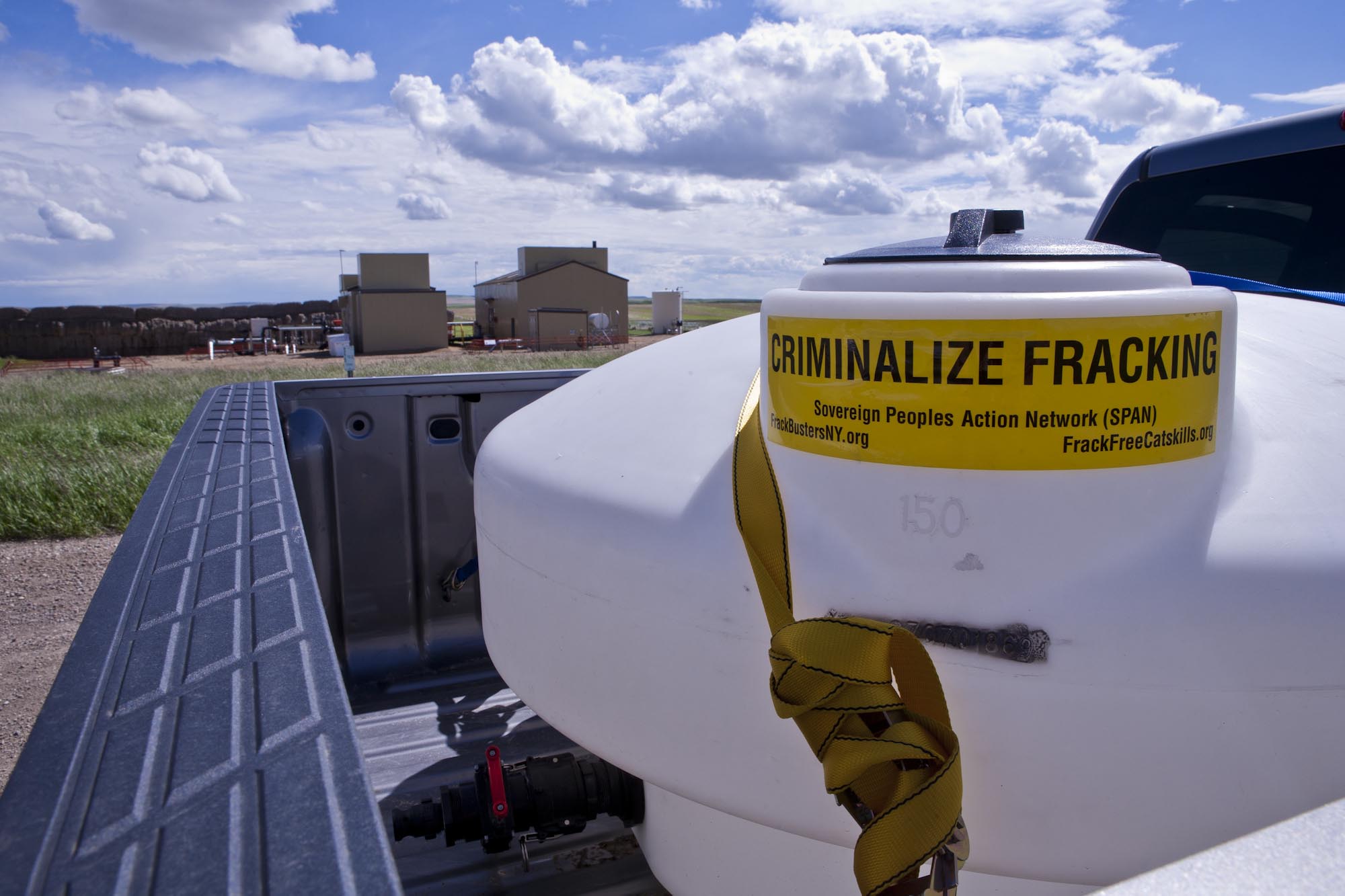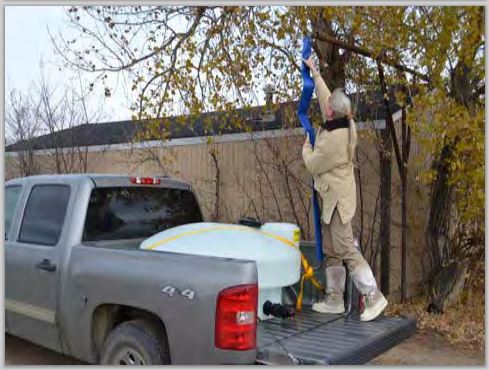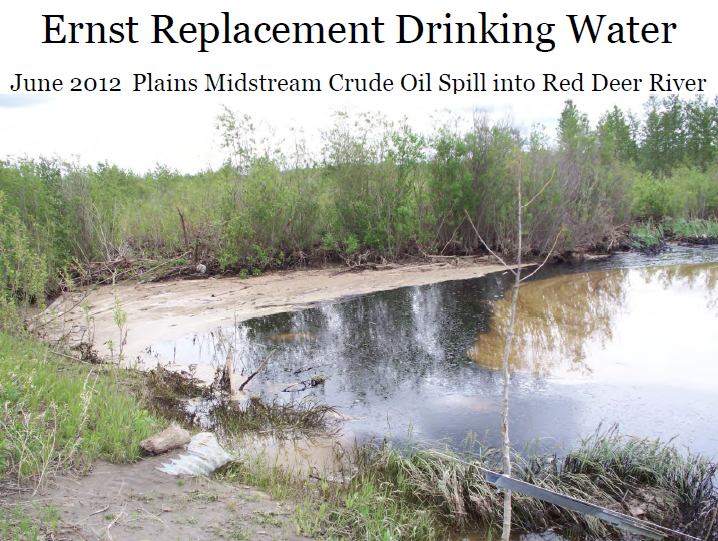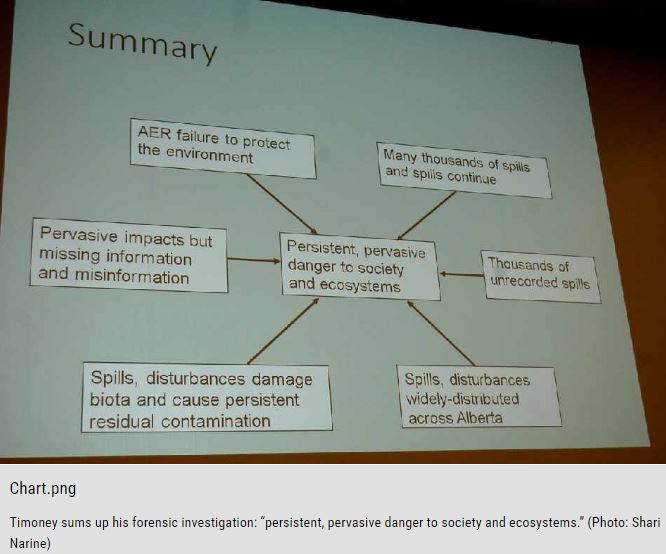Alberta is “guessing” when it comes to spill recovery by Shari Narine, February 4th, 2017, Windspeaker News
North Dakota indicated that in 3.4 per cent of oil spills there was perfect recovery compared to Alberta’s 53 per cent. AER was “off the scale in terms of believability with the very low effects on the environment…”
~ Dr. Kevin Timoney
Timoney sums up his forensic investigation: “persistent, pervasive danger to society and ecosystems.” (Photo: Shari Narine)
A researcher hired by the Dene Tha First Nation and Keepers of the Water has given the Alberta Energy Regulator a failing grade for its efforts to acquire and report accurate scientific data.
Dr. Kevin Timoney examined oil spill clean-up in the Hay River basin in northwest Alberta. He reported his findings on Feb. 2 at the University of Alberta saying his forensic investigation indicates “red flags”.
AER claims that almost every spill was completely cleaned-up, but numerous spills were not included in the AER’s statistics.
In fact, said Dene Tha First Nation Chief Joe Pastion, it was the AER’S claim that contaminated soil had been fully reclaimed that pushed the First Nation to hire Timoney and ask him to do a “more detailed, thorough assessment.”
“These regulatory bodies and regulatory policies don’t measure up,” said Pastion about what is happening to the environment and land.
AER classifies all spills on First Nations reserves and Métis settlements as “non-sensitive areas.” said Timoney,
According to AER statistics there were 61,587 spills in the province from 1975 to 2013. The primary component in 23,655 spills was crude oil. In 14,833 spills, the prime component was saline.
Timoney estimates that another 3,500 to 4,000 spills prior to 1975 had either crude oil or saline as the primary component.
He noted that the spills accounted for in AER’s statistics did not include spills under federal jurisdiction, or reported to Alberta Environment.
Not only were the number of spills inaccurate, Timoney said, so was the total volume of crude oil or saline spilled. That number should be much higher. He noted examples in which the recorded volume spilled did not include the site of the actual rupture.
Further, the AER was not reporting accurately when it gave figures for crude oil or saline sucked out of contaminated soil.
He based that finding on what he referred to as the “falcon effect,” which could be noticed when crude oil or saline spills recovery efficiency was plotted on a graph. The efficiency rate was too patterned and formed the shape of a peregrine falcon.
“This indicates that these numbers are not measured. They’re based on a human assigning a number. They’re guessing,” said Timoney.
Further, Timoney compared AER’s reported success rate to work undertaken in North Dakota. He said North Dakota indicated that in 3.4 per cent of oil spills there was perfect recovery compared to Alberta’s 53 per cent.
AER was “off the scale in terms of believability with the very low effects on the environment” as AER numbers indicated few birds, wildlife or habitat impacted.
“I think it’s fairly clear from the data I’ve gone over in the last year-and-a-half that both industry and the regulator tend to underreport or fail to report wildlife effects,” he said.
In December both the AER and Alberta government refused Timoney’s offer to review his study “to bring to attention these findings so they could discuss them and be prepared for when these results were released.” [!!!!!!!!!!!!!!!!!!!! Cowards!]
Timoney called for public involvement in monitoring oil spill effects and reclamation. He noted that some sites he collected specific information on for his study he would not have known about if Dene Tha First Nation members hadn’t taken him there.
He also called for a complete overhaul of the AER.
AER spokesperson Tracie Moore has said the database was never meant to provide a complete picture of spill cleanup. She also said AER relies on industry to accurately report volumes released and recovered. [Which is the biggest part of the AER’s problem – it relies on the polluters!]
Also partnering in this report were Beaver First Nation, North Peace Tribal Council and the Treaty 8 First Nations of Alberta. [Emphasis added]
‘Estimates of convenience’: researcher says Alberta spills data too positive, ‘Their spill volumes and recovery volumes are too good to be true’ by Bob Weber, The Canadian Press, February 03, 2017, CBC News
’Estimates of convenience’: Researcher says Alberta spills data too positive by The Canadian Press, February 3, 2017, Ottawa Citizen
Is Alberta’s rate of recovery after oil spills too good to be true? One researcher is raising questions by The Canadian Press, February 2, 2017, Calgary Sun
A researcher says the agency that monitors Alberta’s energy industry has underestimated the impact of tens of thousands of spills going back decades.
Kevin Timoney, an Edmonton-area consulting biologist, used sophisticated statistical analysis, an extensive research review and comparisons with other jurisdictions to conclude the Alberta Energy Regulator doesn’t have a good handle on how much oil and saline water has been released into the environment or remains there.
“Their spill volumes and recovery volumes are too good to be true,” said Timoney, who did the study on behalf of northern indigenous bands concerned about spills on their land.
Timoney began with an AER database of 23,655 oil spills and 14,833 primary spills of saline water reported between 1975 and February 2013. The database included records of how much oil or water was spilled and recovered.
Timoney found that the regulator considered 100 per cent of the oil was recovered in 53 per cent of the oil spills. The median recovery rate for oil was 100 per cent and for saline water 80 per cent.
“Thousands of spills reporting essentially perfect oil recovery raise questions of data validity,” he writes in a report which was to be released Thursday.
The regulator listed two types of spill environments: air-land or muskeg-stagnant water. Timoney found that recovery efficiency was reported to be the same for both. Nor was it significantly affected by the size of the spill.
Timoney turned to previous academic spills research. In eight major studies — five on land and three in water — the median recovery rate was 43 per cent. No one documented a perfect recovery.
He then looked at other jurisdictions.
North Dakota, one of the few places where data was available, said only 3.4 per cent of its spill recoveries were 100 per cent successful.
A graph of U.S. oil-spill volumes revealed a smooth, even curve while Alberta’s graph looks like a staircase. That suggests, Timoney writes, “a large proportion of Alberta spill volumes are estimates of convenience rather than measured volumes.”
Tracie Moore, a spokeswoman for the regulator, said the database was never meant to provide a complete picture of spill cleanup. She pointed out that before 2014, the regulator shared cleanup responsibilities with others such as Alberta Environment.
“The remaining volume from the release may have been cleaned up through other means and under the jurisdiction of other entities,” she wrote in an email.
Timoney also subjected the spill and recovery data to a Benford analysis, a statistical tool that exposes anomalies in large data sets. It has been used in everything from forensic accounting to biology and is accepted as evidence in some U.S. courts.
The AER recovery data was off for both oil and saline water, Timoney found. Given the size of the data set, Timoney concluded the chances of the AER numbers representing actual measured values were vanishingly small.
“If a tax auditor looked at this, there’d be people knocking on doors the next day.”
Moore said the regulator relies on industry to accurately report volumes released and recovered.
“This information may then be verified by AER experts,” she wrote.
Timoney suggests numbers in the AER’s database are the result of managerial decisions and not in-field reporting. That could mean spill and recovery volumes have been underestimated for decades, he said.
“We don’t know how much is spilled and we don’t know how much is left in the environment.”
The AER database says that habitat was damaged in less than one per cent of all spills. In contrast, a study of oil and saline releases in Oklahoma from 1993 to 2003 found damage to surface water, crops or livestock, soil, fish or wildlife in about one-third of 17,000 cases.
Again, Moore noted, monitoring habitat damage may have fallen out of the pre-2014 regulator’s purview.
“Now that AER has jurisdiction over the entire life cycle of oil, gas, coal and oilsands, we have a better understanding of the impact of incidents on the environment.”
Lingering impacts from spills are common on the Alberta landscape, Timoney said, even on sites that are considered remediated. Effects can persist in residual soil contamination and non-natural plant communities.
He believes his investigation raises major concerns in how the regulator monitors an industry with a footprint in Alberta of 12,000 square kilometres.
“We have an environmental risk that is pervasive across the province and it’s unassessed,” Timoney said. [Just how the lying AER and industry wants it!]
“It’s a major liability not only for the present, but if we ever try to fix things, for the future as well.” [Emphasis added]
Alberta oil spill recovery data too perfect: researcher by Bob Weber, The Canadian Press, February 2, 2017, Edmonton Journal
[Refer also to:
2016 08 03: In Texas, wastewater spills get less scrutiny. In Alberta, do they get any?
2015 07 08: $16K fine for Apache pipeline spill not even a slap on wrist

June 2014, Ernst alternate water hauling tank on county road by Encana’s 7-13-27-22-W4M gas wells and compressors, approximately 900 metres from Ernst’s contaminated water well.

October 2013, Ernst at Rosedale (east of Drumheller, about a 45 minute drive, one way), still hauling alternate water. The Ernst water is too dangerous to even use to flush toilets.
Source of this water is from Drumheller municipal drinking water supply taken from the Red Deer River contaminated by Plains Midstream in June 2012. The municipality does not treat for BTEX, found by the regulator in drinking water from the Red Deer River.

Slides from Ernst Presentations
2013 08 05: When 2 wells meet, spills can often follow
2013 04 31: The cost of no ERCB penalties is too high in Alberta

